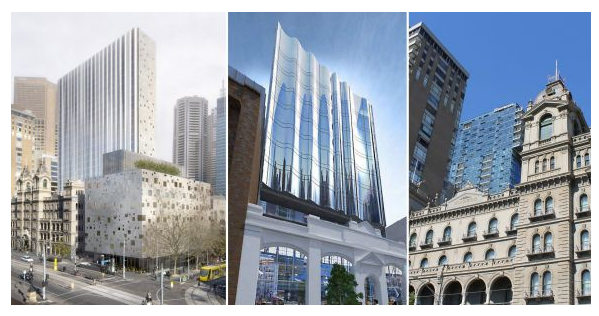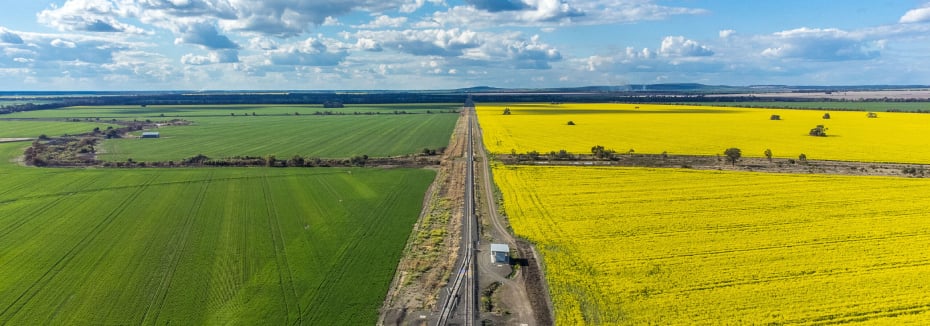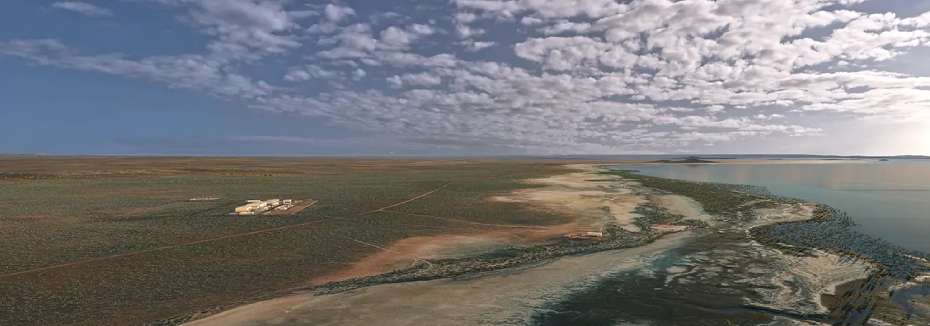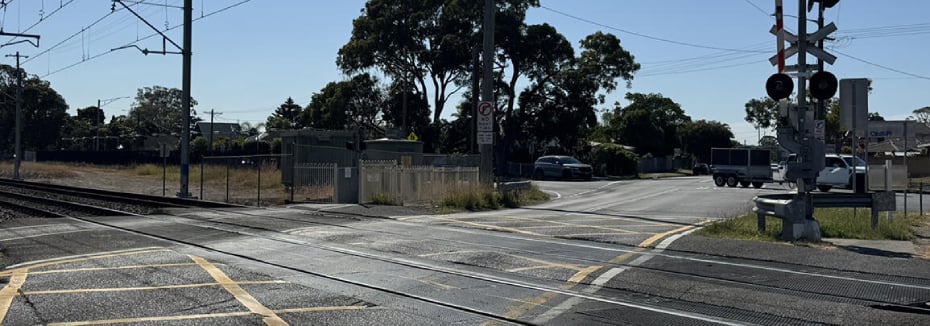Melbourne's central city planning encourages builders to move to hotel development

Until very recently, years of lax controls allowed Melbourne – fuelled by local and overseas capital – to build apartments with four times the maximum density allowed in high-rise capitals like Hong Kong, New York and Tokyo. However, in early September, the state government imposed limits on the desnity of buildings developers can put on sites. It also made Melbourne's discretionary height limits mandatory. So how have Melbourne's developers adjusted? Many have made the switch to develop hotels, rather than residential towers.
NEW CBD RULES 
Michael Bleby reported on the sudden steps taken in early September 2015 by the Victorian Government to curb the excesses of dense and poorly-designed CBD towers with new planning controls:
The changes follow a February report by City of Melbourne planner Leanne Hodyl, who warned that weak regulation was permitting a rash of tall buildings with densities that would have "negative, long-term impacts" on the city.
"At the moment we've got very significant densities, particularly in the CBD and Southbank, without due regard to the public realm," Planning Minister Richard Wynne told AFR Weekend.
"You've got developments that are very, very close to each other in terms of their capability to look into the surrounding properties," Mr Wynne said. "There are issues with light, issues with ventilation, with wind shear at the ground level."
The main change made was the immediate imposition of a so-called plot ratio of 24:1, meaning the floorspace created by any new development is limited to 24 times the area of its site. That doesn't necessarily cap height or shape, but sets an overall limit on the size of a project. Cities that have site ratios – including Sydney, which has a maximum ratio of 11:1 – use the ratio as a tool, expanding in exchange for concessions such as creation of public space or facilities.
In Melbourne, which has had no effective density limit, buildings have been approved in recent years such as developer Brady Group's Vision Apartments at 504 Elizabeth Street, which has a plot ratio of 47:1. It takes up almost all of its site and the completed 67-storey building – currently under construction – will rise 226m and contain 471 apartments. CEL's planned 150 Queen St development was approved with a 71-storey tower with a ratio of almost 65:1.
The new policies made the discretionary height limits based on so-called OLS airspace limits that exist in parts of the CBD. They also gave the City of Melbourne a formal say in all development applications in the city, even those above the 25,000-square-metre threshold that makes them responsibility of the minister. The new rules do not apply to current development applications, do not apply to the Docklands or Fishermans Bend and will only partly apply to Southbank.
DEVELOPERS MOVE TO HOTELS
News reports have flowed thick and fast of late detailing Melbourne's booming room occupancies, often passing the 90% mark. A recent AFR article shows:
BPM founder and director Jonathan Hallinan said his company always intended to develop hotels, but the changes that effectively cut the yield on sites had sped up his move.
"There is an undersupply of hotel rooms in Melbourne," Mr Hallinan told The Australian Financial Review. "One of the things we are looking at is how we can give what is required at the moment, in the hope of some leniency."
Melbourne needs rooms. Demand is likely to grow faster than new supply and the city's average occupancy rate is likely to tighten from 86.3 per cent in the first half of this year to 88.2 per cent by December 2017, Deloitte said in its latest Tourism and Hotel Outlook 2015 report.

Many hotels operators are seeking a slice of the action close to Spring Street, developments include Windosr Hotel, Sheraton, Rosati's, Nauru House and W Hotel.
But the interim controls that state Planning Minister Richard Wynne introduced without notice in September are hastening that trend. Last week, hotel developer and operator Pro-invest paid $25 million for a development site in Southbank and head of development Tim Sherlock said the new rules would help hotel developers because their rooms were smaller and density controls affected them less.
In the hotel-deficient Victorian capital, developers are already responding to the need. Last month Singaporean developer Well Smart Investment Holdings won approval to build a 478-room high-rise hotel on Little Lonsdale Street in the centre of Melbourne, after amending the original plans from a mixed-use development to a pure hotel project.
Over the next 10 months, the Labor Government will work closely with the City of Melbourne, CBD businesses, residents and the development industry to introduce strategic plans.
Are you tendering for government business? Local suppliers can help improve your tender applications with a plethora of cost and non cost benefits. It's equally important to know why Government officers include local industry weightings in project tenders, and how to highlight that you've local suppliers in your offer. The great news is that we've put together this free eBook to walk you through the entire process of making your bids more competitive using local supplires.

Recent Articles
NSW Govt approves Inland Rail Narrabri to North Star Phase 2 project
Delivery of the second phase of Inland Rail in New South Wales will soon get underway as the State Government gives the green light to the Narrabri to North Star Phase 2 project.
New significant milestones reached on proposed Northern Water Project
Two significant milestones have been achieved on the proposed Northern Water desalination plant in South Australia.
Plans unveiled for major upgrade to NSW Rawson Rd level crossing
The New South Wales Government has unveiled plans for a major upgrade at Rawson Road and Railway Street in Woy Woy to make one of the Central Coast’s level crossings safer.
Get the latest project news
- updates on Australia's pipeline of state and federal projects
- fresh contract awards from major contractors and builders
If you're looking to contact us about other matters, please contact us.





